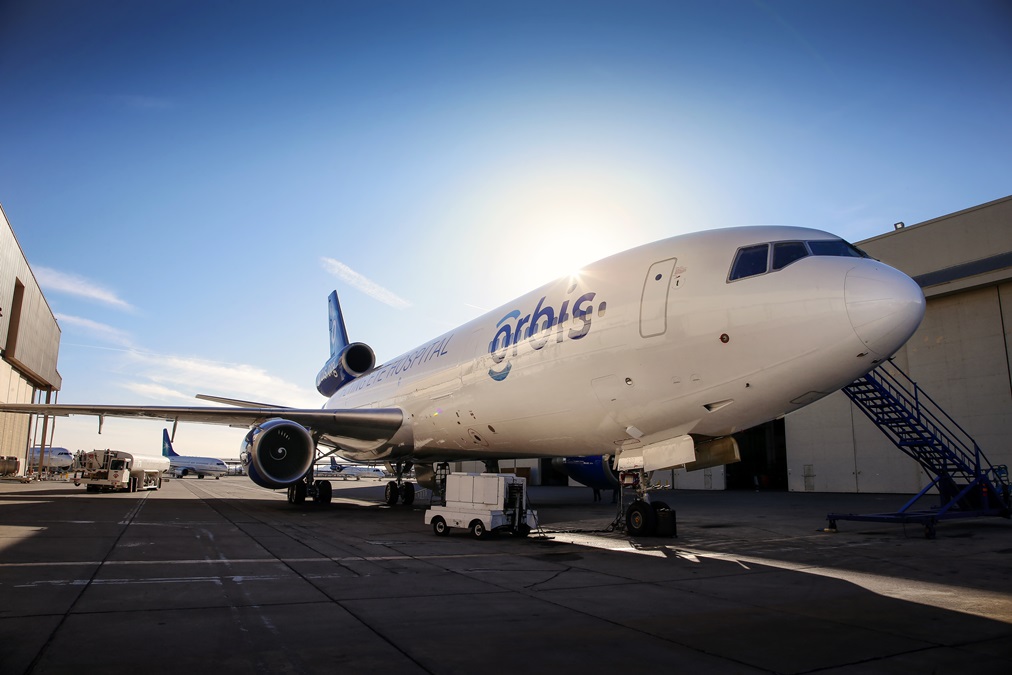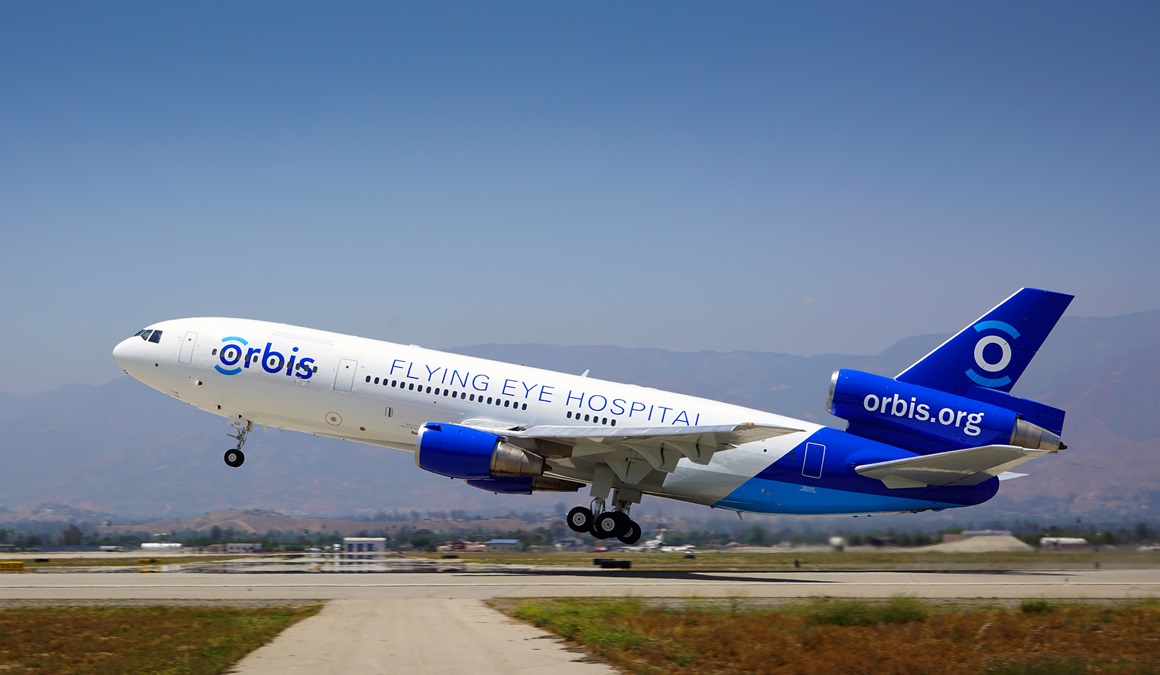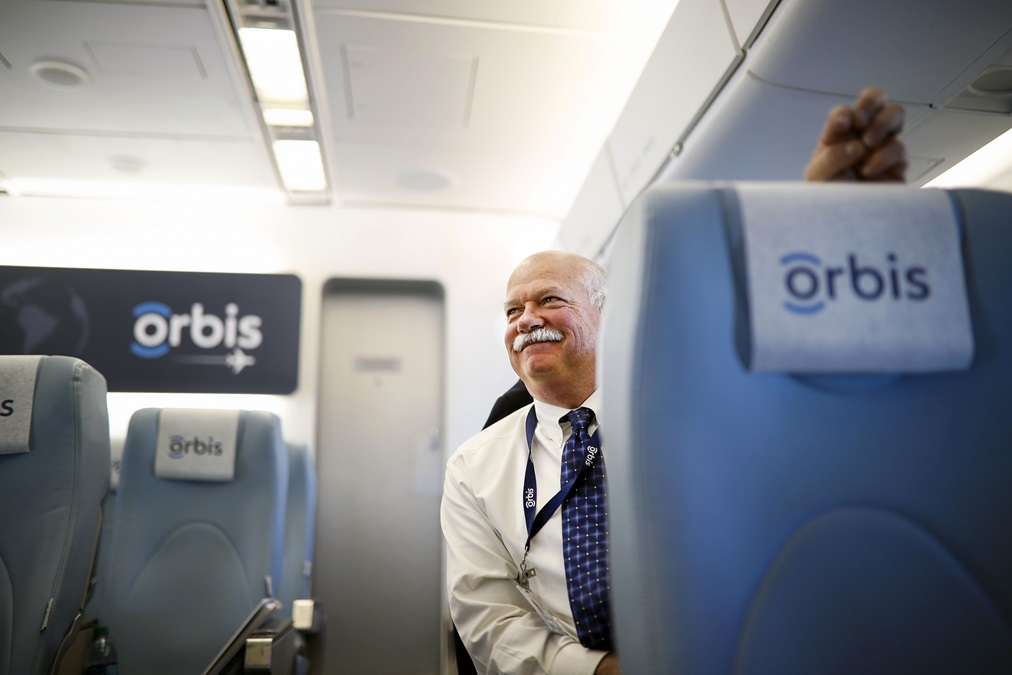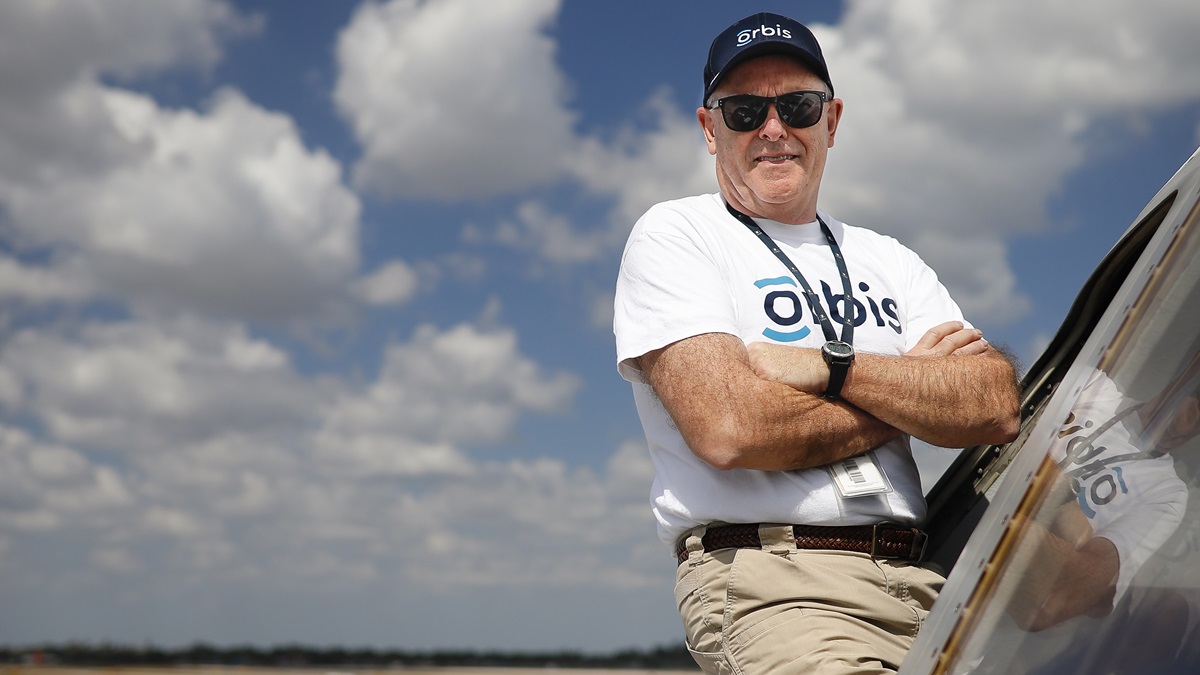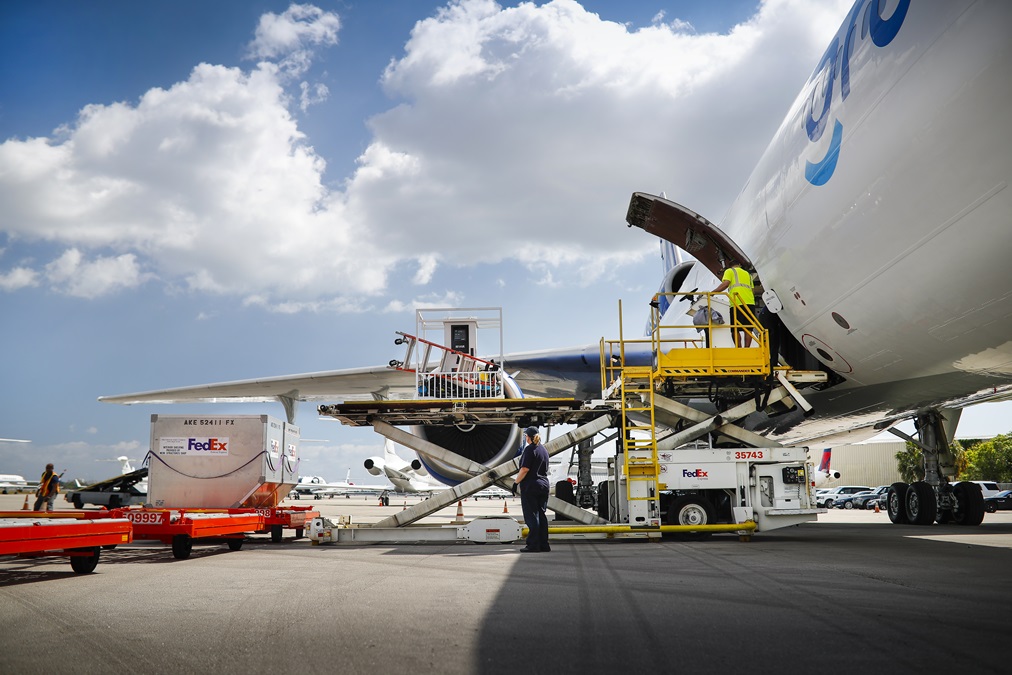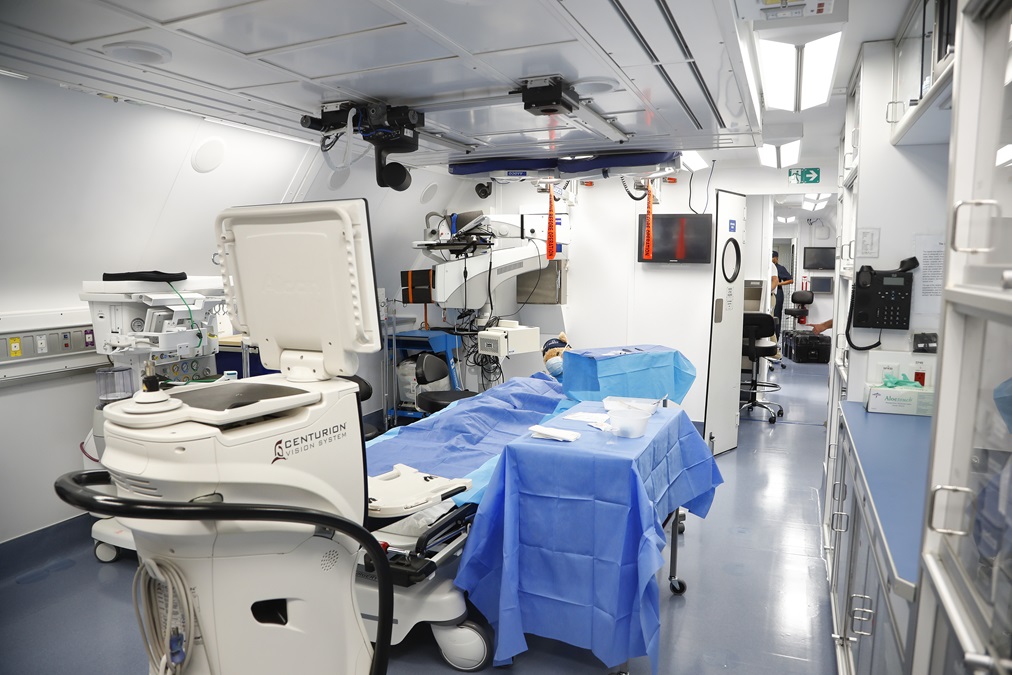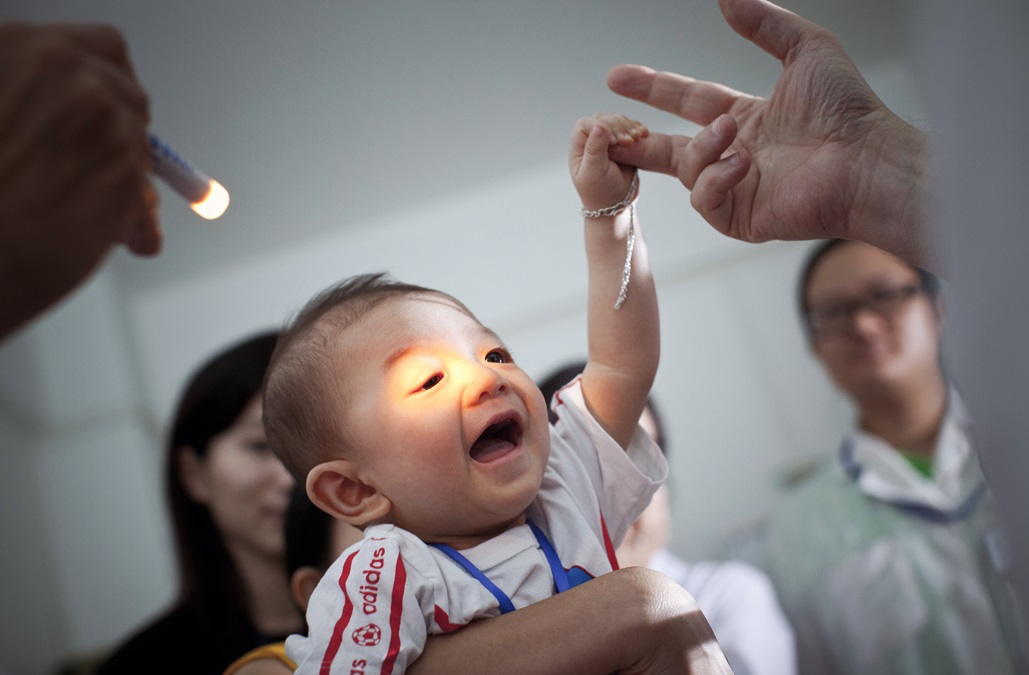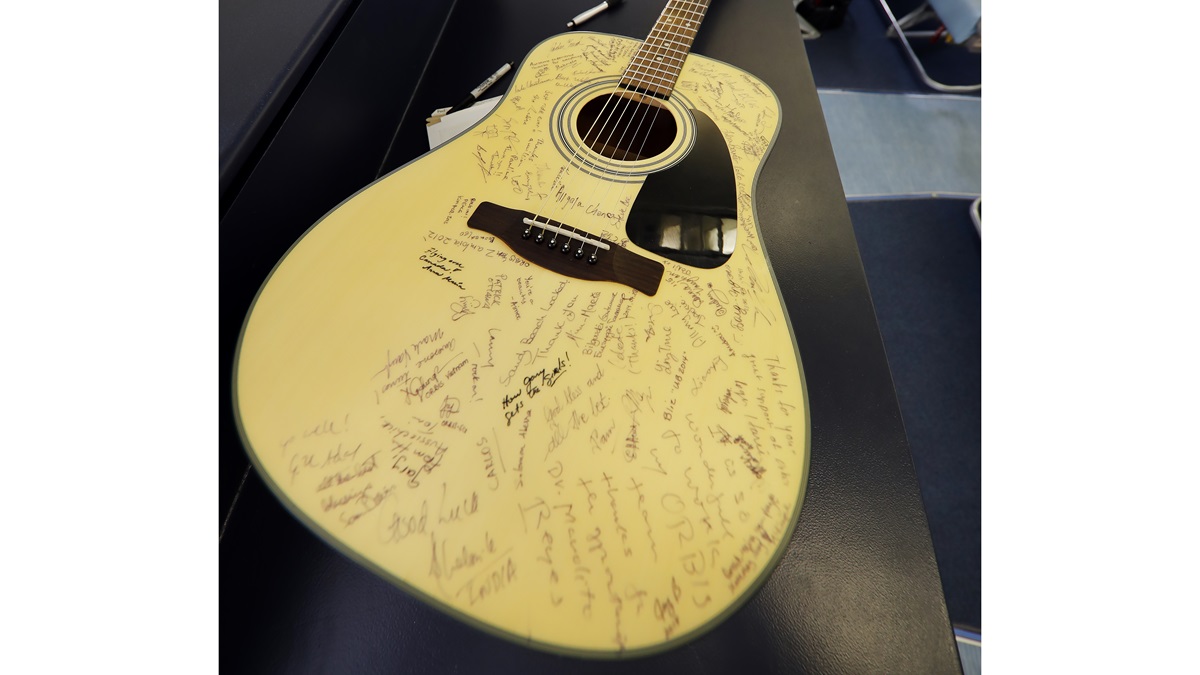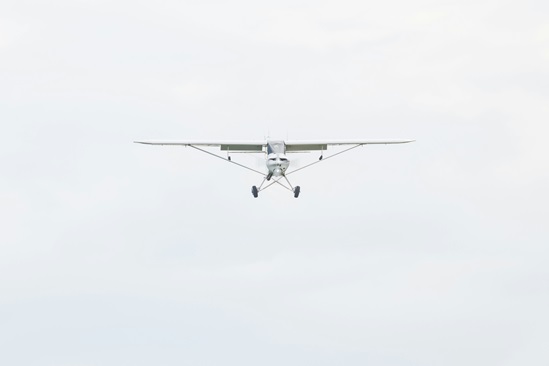One glorious vision
How an airplane brings life-changing procedures to the world
But this is a life-changing MD–10—an accredited teaching hospital ready to sprint around the world, carrying the most advanced gear available to perform eye surgeries and teach others the skills to do the same. The enormous airplane does it all—carries the hospital itself, creates hospital-grade oxygen on demand, purifies water, even uses its own Jet A fuel to power generators tucked into the hold, allowing it to go to work anywhere there’s a runway long enough to handle the trijet.
The lumbering airliner-turned-cargo-jet-turned-eye-hospital is the most visible presence of Orbis International, a global force bent on stamping out diseases of the eye that otherwise leave the most vulnerable without hope.
“Blindness is so devastating, especially in developing countries, because there are no support services there and without sight in places like that a person is helpless. You can’t work. You can’t get an education. You are reliant on someone else—often ostracized. People lose hope,” says Bruce Johnson, director of aircraft operations for Orbis. “And what’s so frustrating is that so much of it is preventable.”
A retired instructor in the FedEx flight training department and a Piper Twin Comanche owner, Johnson treks around the world in the airplane with a crew of volunteer FedEx pilots, maintenance technicians, doctors, nurses, anesthesiologists, IT and AV experts, accountants, and volunteers from just about any other discipline you’d find in a hospital in a major city—66 projects in 18 countries in 2017 alone. The crew on the airplane—plus those at some 15 offices around the world—performed more than 15.7 million eye exams and screenings between 2013 and 2017, and nearly 400,000 eye surgeries and laser treatments—a quarter of them on children. And yet there is so much more to be done.
Orbis reports that the number of people expected to go blind will triple by 2050. Seventy-five percent of the impairments can be prevented or treated. Three quarters of the world’s blind children live in low- and middle-income countries.
For some, a knight in shining aluminum comes hurtling over the horizon to a nearby airport. Within a matter of hours, generators are unloaded, massive environmental systems are fired up, fuel and power lines are run, beds are unfolded, cameras come to life, a steady stream of passengers come onboard for exams, and for a few—usually ones screened months in advance by ground crews—life-changing surgeries are performed. Doctors experienced in a broad variety of eye disciplines come in from all over the world to donate their time, meeting the airplane wherever it is and staying for about a week at a time. As one discipline moves out, another is ready to step in. The state-of-the-art surgical suite is over the main landing gear, the most solid part of the airplane and least likely to move when strong winds blow—a potential hazard during delicate laser surgeries conducted under powerful microscopes.
While the surgeries are under way—observed in person by local doctors learning the techniques—other doctors observe via high-resolution 3-D monitors in the airplane’s front compartment, with airline seating for 46. During our visit, the team was experimenting with virtual reality glasses to give the observers an even more in-depth experience. The surgeries are also streamed worldwide for doctors anywhere to observe and learn.
“It’s all about ‘train the trainers’—it has to be sustainable training,” says Johnson, also a former U.S. Air Force mechanic, who started at Orbis as a volunteer in 2005 and later became a staff member. Orbis provides follow-up visits for months after the airplane leaves to ensure the local doctors are comfortable with their new skills. The organization trained some 62,380 doctors, nurses, teachers, and others in 2017—their most ever.
While doctors and nurses are busy in the operating room, other volunteers are training local technicians on best practices for hygiene and equipment sterilization. And more doctors are in another room using an eye surgical simulator to coach local doctors on new techniques. The aft end of the airplane is the recovery room, which, like the operating suite and sterilization center, looks as if it could be in any big hospital.
Making all of this possible in remote—and not so remote—parts of the world is what Johnson calls the “Queen of the Sky.” The Orbis MD–10 started out life as a DC–10-30CF in 1973, spending its early life flying for Trans International Airlines/Transamerica. In 1984, it became a freighter for FedEx and in 2001 was converted to an MD–10-30F, which includes a host of avionics and systems upgrades developed by McDonnell Douglas when it created the MD–11 airplane—including removal of the flight engineer station, making it a two-pilot airplane. The mammoth upgrade takes months to complete, according to Johnson.
Meanwhile, the DC–10-10 that Orbis had been flying was wearing out and its hospital system needed replacing. The hospital was built into the airframe, and every change or modification to the airframe required FAA approval—a big challenge given the constant advancements in medical equipment. Orbis retired the DC–10-10 in the fall of 2016 and donated it to the Pima Air and Space Museum in Tucson, Arizona.
Learning of Orbis’ plan to retire the old airplane, FedEx donated the MD–10-30 in 2010 and helped convert it back to passenger configuration, opening up windows and doors long since covered over. And then Johnson set out with a team of engineers to create a palletized hospital that could be slid in via the yawning cargo door.
The result is a stow-and-go hospital that is disconnected from the airplane except for a couple of easily managed electrical circuits. Each major section of the hospital is built into a jumbo cargo container, which can be removed—although not easily. Because it is now just cargo as far as the FAA is concerned, there is no need for the agency to approve every little change that occurs to the hospital equipment.
Climbing the airstairs, you first walk into the passenger compartment just behind the cockpit. Behind the passenger compartment begins a hallway along the left side of the fuselage. Doors from the A/V room, laser room, operating suite, and sterilization center along the right side open into the hallway. The hallway ends in the recovery room at the back.
None of the hospital space can be occupied in the air. A heavy bulkhead door just behind the passenger compartment is closed during flight.
We visited the MD–10 in early March 2018 just as it was finishing months of winter maintenance at AerSale at Phoenix Goodyear Airport. With several major work projects complete, Johnson and other paid Orbis staff were finishing final checks, an engine run, and loads of logbook entries. Meanwhile, volunteer FedEx pilots Gary Dyson, who is the Orbis chief pilot, and Eric Van Court, technical pilot, showed up right on schedule and began their own duties of flight planning and preparing for their morning flight to Palm Beach, Florida.
The airplane operates under Part 125 of the federal aviation regulations, which is designed for large aircraft not used for “common carriage.” In addition to providing access to parts, shipping, and scores of other resources, FedEx provides the recurrent training for the 19 volunteer pilots.
“For pilots, the aircraft provides a unique experience,” says Dyson. “With this mission we see kids who can’t see on Monday and on Wednesday they can. Wow! Where else can you do that?”
By late morning, with all the checks done, the crew piles on board for the quick trip to Florida.
I climb into one of the two jump seats in the wide cockpit. Readying the old bird for flight is more akin to launching an ocean liner than an airplane. There are a few last-minute delays and many system checks after all of the work and downtime.
But soon, weighing some 456,000 pounds and carrying 100,000 pounds of fuel, we trundle down Runway 3—nearly the full length because the taxiway doesn’t provide the needed turning radius for the jumbo jet. At the end a tug is required to turn us around on the runway, positioning us for takeoff. Dyson slowly advances the thrust levers as the three massive GE CF6-50C2 engines spool up, turning a river of fuel first to noise and then into some 54,000 pounds of thrust each. Soon we’re barreling down the pavement, streaking past dozens of retired airliners, relics in the desert sun.
Gear and flaps up, Orbis One arcs around to an easterly course and we’re off, climbing to a cruise altitude of 35,000 feet. It is the airplane’s first flight of the year. It averages about 110 hours a year and 18 flights.
In this case, the flight to Palm Beach International Airport (PBI) is for training and fundraising before launching on missions to Peru and parts of the world later in the year.
We arrive at PBI just before sunset, parking on ramp space donated by Signature Flight Support.
The next morning, the flight crew gathers to solve a problem as the volunteer medical staff shows up. It seems the Orbis One tail is so tall that it is creating an official obstacle on the airport. They reposition it, moving the tail farther away from the runway.
Problem solved, medical, flight, and maintenance crews go to work transforming the former wide-body airliner into a hospital. Portals on the right side are opened up and FedEx-donated cargo loaders roll onto the ramp, ready to remove pallet after pallet of equipment and generators. Airstairs and ladders donated by Atlantic Aviation slide into place. Crews inside the fuselage begin the Tetris-like operation of unpacking gear in the laser room, operating suite, and recovery room. Soon, doctors are experimenting with a new child-sized medical mannequin on a gurney. It is the latest and greatest for teaching anesthesiology techniques.
A steep set of stairs in the aft end of the airplane leads down to a cargo hold that doubles as an office for the maintenance crews. A computer tracks parts and costs, work tables for making repairs, and many linear feet of the finest tools and tool chests that Snap-on has to offer—all donated.
Valerie Suberg, an A&P mechanic and Piper Arrow owner, is the senior manager of aircraft maintenance at Orbis, one of the paid staff. She has traveled with the airplane for years and seen many parts of the world. Her challenge is to make sure she has the parts and expertise on board—wherever they are—to keep the hospital and the airplane working. Some countries aren’t very welcoming. Officials at some stops see the bright shiny airplane as a way to extract money for every little thing. She has become an expert negotiator and a great observer of the impact that Orbis can have. She tells me remarkable stories about her experiences seeing lives changed through the work that happens on the airplane. She chokes up a bit in remembering a visit to Addis Ababa, Ethiopia, where two little girls—both blind from cataracts—had played together for years. They both went in for surgery and the next day they “met” for the first time as they sat face to face as their bandages were removed—they had never seen each other. The crew gave them each mirrors so they could look at themselves—again, a first. “It brought tears to everyone in the room,” she says.
“To be able to see the miracles and lives that are changed each day on the plane is what is important. Everything else seems to fall by the wayside.”
Just another day’s work for a lumbering old airplane.
Email [email protected]

